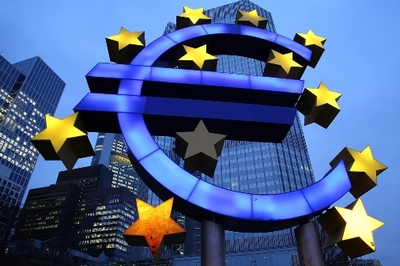The euro declined further against the US dollar to a fresh low in over two years amid concerns about the Eurozone’s economy, Trump’s tariffs, and monetary policy discrepancy between the ECB and the Fed.
The euro declined 0.9% against the US dollar, reaching mid-1.02, its lowest level since 21 November 2022 on Thursday.
The common currency extended weakness against its counterpart at the start of the new year due to concerns about the Eurozone’s economic outlook, political instability, and a monetary policy discrepancy between the European Central Bank (ECB) and the Federal Reserve (Fed).
The EUR/USD pair has fallen sharply from the 2024 peak of above 1.12 in September, marking a 9% decline over three months.
The US dollar’s strength, bolstered by Donald Trump’s presidential victory, has exacerbated the euro’s weakness since November.
Parity in sight
Analysts expect the euro-dollar pair to reach parity in 2025, a level last seen in 2022 when Russia launched a full-scale military operation in Ukraine.
Adding to the Eurozone’s woes, Ukraine stopped Russian gas transit to Europe following the expiration of a five-year contract on Wednesday.
This development has forced many European countries to rely on costlier heating alternatives during a harsh winter.
Natural gas futures surged to a two-year high of more than $4 per million British thermal units (MMBtu) earlier this week, before retreating to $3.66 MMBtu during Friday’s Asian session.
Weak economic data further underscores the challenges. S&P Global’s final December manufacturing PMI for France and Germany showed continued contraction in the sector.
France reported its sharpest decline in manufacturing activity since May 2020, while Germany’s manufacturing output hit a three-month low.
In December, France’s central bank revised its economic growth forecast for 2025 down to 0.9%, from the previously projection of 1.2%.
Both France and Germany are grappling with political instability, as ruling party coalitions collapse amid surging far-right power.
Globally, the Eurozone faces mounting risks under Trump’s presidency. The US president-elect has pledged to impose higher tariffs on imports from China, Canada, and Mexico.
While no explicit announcements have been made, European automakers are particularly vulnerable to potential tariff hikes.
The dominance of the Dollar
The US dollar has been soaring amid a hawkish shift in the Fed’s monetary policy and Trump’s presidency. The dollar index surged to above 109 on Thursday, the highest since November 2022.
The Fed initiated the easing cycle with a jumbo 50 basis point rate cut in September. However, the bank shifted to a much more hawkish stance following resilient jobs data and improvement in other economic data.
In December, the Fed cut the interest rate by 25 basis points as expected. However, the bank signalled a much more hawkish stance on its easing cycle in 2025.
The Fed’s dot plot, a chart that projects the future path of interest rates, indicated a half-percentage point rate cut in 2025, compared to a full percentage cut projected in September.
In contrast, the ECB is likely to accelerate its rate-cutting cycle in 2025. The ECB reduced its policy rate by a full percentage point in 2024, and analysts expect another percentage-point cut next year as the Eurozone continues to face economic and political headwinds.
These include persistent political instability, a slowing Chinese economy, and the implications of Trump’s presidency, all of which contribute to a bleak economic outlook for the region.
by Tina Teng
Credits: euronews.com

